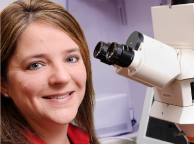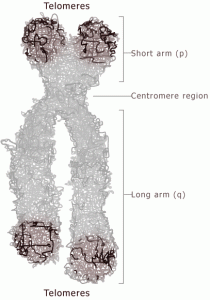Emory genetic researchers Daniel Moreno De Luca, Christa Lese Martin and David Ledbetter were part of a team that produced a landmark result in autism genetics. The team identified hundreds of regions of the genome where spontaneous mutations are implicated in autism. Spontaneous mutations are those that arise for the first time in an individual, rather than being inherited from parents.

Christa Lese Martin, PhD
The team was led by Matthew State at Yale, and their results were published in the journal Neuron. Moreno De Luca discussed the topic in Spanish on a recent edition of the NPR program Science Friday. The June 10 segment was focused on autism genetics.
The team made an intriguing finding on a segment of chromosome 7. Deletion of the region is associated with Williams syndrome, where individuals can exhibit “striking verbal abilities, highly social personalities and an affinity for music.” Duplication of the same region, they found, is associated with autism. This information could further down the line facilitate a more accurate autism diagnosis.

Daniel Moreno De Luca, MD MSc
Companion studies also shed light on the question of why boys are more likely to develop autism than girls, and begin to outline a network of genes whose activity is altered in the brains of individuals with autism.
Ledbetter is now chief scientific officer at Geisinger Health in Pennsylvania.






